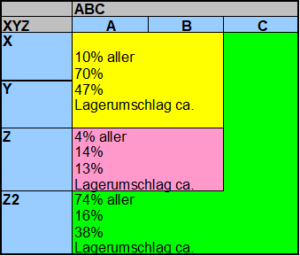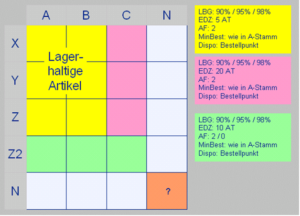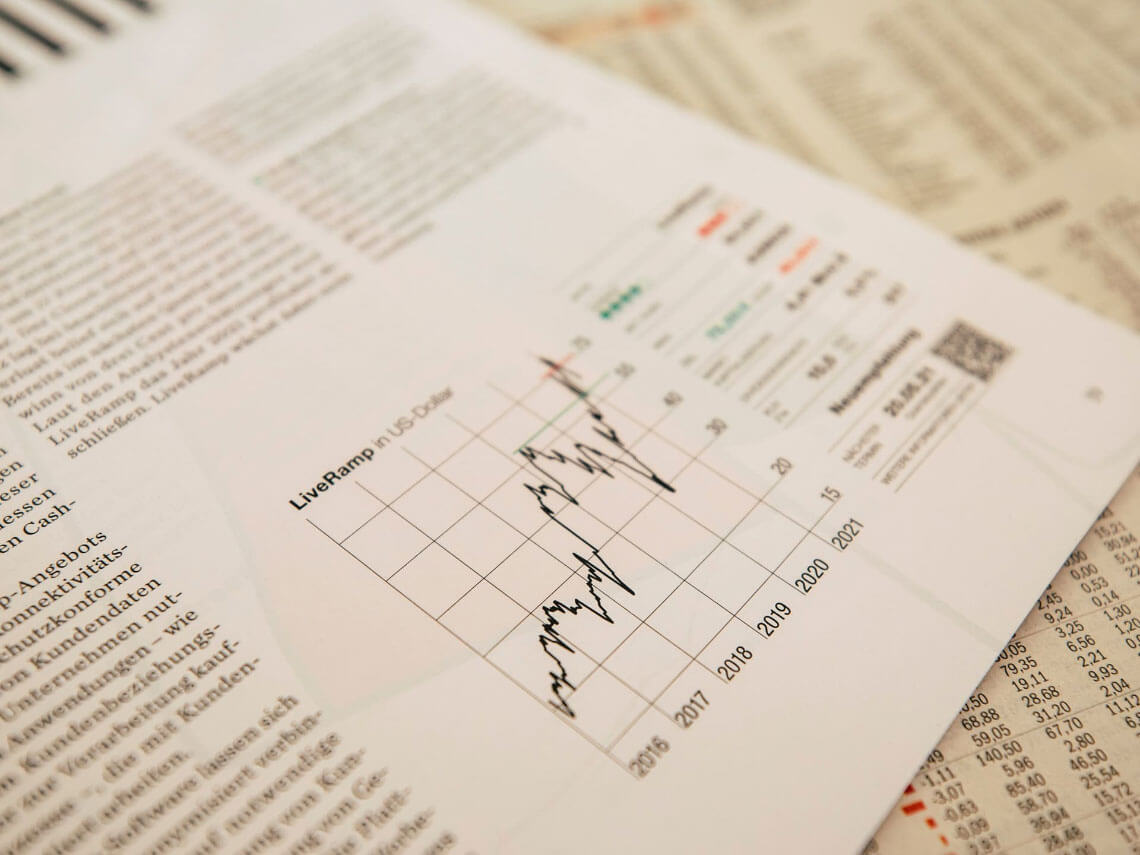Consistent market orientation with pull system implemented at Hansgrohe
by Ulrich Jaeckle, Head of Purchasing/Logistics at Hansgrohe AG, and Dr. Bernd Reineke
The sanitary and bathroom specialist Hansgrohe, which has been in business for over 100 years, is currently optimizing its supply chain processes: “Logistics is one of our core topics for the coming years. The Logistics 2010 project is of extraordinary strategic importance for Hansgrohe,” says Siegfried Gänßlen, CFO at Hansgrohe. The focus here is on optimizing the entire value chain. Together with the Leonardo Group, Abels & Kemmner was commissioned to optimize production and procurement and to consistently align them with market requirements. The first results are now available: Thanks to the consistent implementation of the pull system, from now on no order will be triggered without a demand requirement, which creates inventory security. The potential for reducing inventories of raw materials is also hugely beneficial to liquidity at over 30%.
The objective of the project was clearly defined from the outset: to react flexibly to the increasing demands of the market with short response times. The aim is to keep stocks as low as possible without compromising the delivery service or increasing process costs. In plain language, a consistent focus on the market means that products in demand must be available at short notice and that no procurement or value creation can take place without demand. This requires finely tuned process steps within the company and across the board, right through to the suppliers.
The tasks at hand were tackled in parallel in several teams: the process team was responsible for designing the process-oriented production lines. The product team was to convert the company’s internal material flow to consumption control. The procurement team had the task of optimizing procurement planning and integrating suppliers into the procurement process.
With the aim of achieving positive effects in the short term, a two-stage approach was adopted in the area of procurement logistics. The first step was to analyze and reorganize the procurement planning; the second step was to integrate the suppliers into the procurement process. In their approach, the players applied the tried-and-tested methods and procedures of Abels & Kemmner. A brief review of the current procurement processes and existing supplier relationships showed that Hansgrohe was already operating at a high level. The procurement processes were mapped and supported by the SAP system throughout. Framework agreements (volume contracts) with delivery call-offs already existed with many suppliers.
This was also already an integral part of the SAP processes. The in-house developed supplier information tool “Lextra” proved to be very efficient. This is an Internet platform on which suppliers can access all the necessary and supplementary information. The information includes long-term requirements planning for materials, framework agreements and delivery call-offs. This means that suppliers receive their orders without paper or faxes. The data can of course also be accessed electronically and transferred to the supplier’s merchandise management system.
The results of the ABC/XYZ analysis show a classic picture: While it is possible to keep inventories in the AB/XY area low in relation to sales, inventories of sporadically required items (Z2 items) and low-value C items are too high, which is expressed by a low inventory turnover value. Based on these findings, the next step was to define the parameters for the simulation runs in DISKOVER. Where possible, a high stock turnover should be achieved for high-quality A and B articles. For this purpose, a cover period of 5 working days was selected, i.e. the requirements of 5 working days are summarized in the order quantity calculation. A stocking period of 20 working days was selected for the low-value C-items, which only has a minor impact on stocks but should keep the administrative and physical effort in purchasing and logistics to a minimum. The sporadically consumed Z2 items were also taken into account in the simulation, although these items should be procured on an order-related basis in future due to the higher inventory risk.
 All articles were simulated with three different degrees of readiness for delivery in order to be able to assess the achievable degrees of readiness for delivery and to determine the effects of the degree of readiness for delivery on inventories. The simulations were carried out both with the forecasting methods available in DISKOVER and, to a limited extent, only with the methods available in SAP, which meant that the distribution-free methods were excluded.
All articles were simulated with three different degrees of readiness for delivery in order to be able to assess the achievable degrees of readiness for delivery and to determine the effects of the degree of readiness for delivery on inventories. The simulations were carried out both with the forecasting methods available in DISKOVER and, to a limited extent, only with the methods available in SAP, which meant that the distribution-free methods were excluded.
The results of the various simulation runs showed stock reduction potentials of up to 47%. The degree of readiness for delivery of future stock items was between 91% and almost 96%. The high delivery readiness levels were achieved with the distribution-free procedures in DISKOVER, but the SAP procedures also produced satisfactory results. The SAP process with a target delivery readiness level of 95% was therefore chosen as the preferred option, which still meant a stock reduction of around 34%.

Following the analyses and simulations, the implementation of the results was tackled immediately. To this end, the planning procedures for selected stock items in the SAP system were converted to forecast-based reorder point procedures and the necessary planning parameters, as calculated by DISKOVER, were entered. As a result of the changeover, Hansgrohe is no longer stocking up so heavily on materials and the number of delivery call-offs is increasing compared to the past. In order to prepare the suppliers concerned for these changes, they were invited to an information workshop at which the procedure in the Logistics2010 project was explained in more detail and the effects on future call-off behavior were presented. Each supplier received a list of their articles with details of the changed settings. Furthermore, the suppliers were once again reminded of the delivery deadlines and delivery flexibility agreed in the framework agreements, as these settings will become even more important for Hansgrohe in the future due to the lower stock levels and are essential for successful implementation. The response from suppliers was consistently positive. Involving suppliers in project work at Hansgrohe offers the opportunity to influence future processes and sends a clear signal for long-term cooperation. At the end of the supplier meeting, Abels & Kemmner presented an outlook on future cross-company material flow concepts, including a connection via Kanban. You can find out more about this form of supplier integration in one of the next issues of Potentials.

The success of the changes became apparent within a short space of time. Within 10 weeks, the stock of pilot articles has already fallen by over 50% and the simulated target stock levels have almost been reached. After further conversions, the total stock fell by more than 15% within a short space of time. With these positive results, we are now moving on to material flow supplier integration, which aims to further optimize inventories and significantly streamline the administrative workload in logistics and purchasing.
Hansgrohe AG (www.hansgrohe.com), based in Schiltach in the Black Forest, employs more than 2,600 people worldwide, a third of whom work abroad. The company, which in its 104-year history has earned a reputation within the industry as an innovation leader in technology and design, generated sales of 428 million euros in 2004 with its brands Axor, Hansgrohe, Pharo and Pontos (2003: 369 million euros) – an increase of 16% compared to the previous year. Hansgrohe AG produces in five German plants, in France, in the Netherlands, in the USA and in China.
The leonardo group was founded in 1998 and has its international headquarters in the center of Europe, Zug, Switzerland. Project offices are located in Germany and France. In the USA, leonardo group is represented by partners. The leonardo group is a catalyst between science, technology and “reality” in manufacturing and supply chain management. Thanks to intensive contacts with leading institutions in Europe and the USA, the leonardo group is able to translate new developments into practical solutions for the industry. This is illustrated by innovative approaches to training and software. All consultants have several years of experience in the industry.
Abels & Kemmner cooperates with the Leonardo Group on overarching topics in the area of supply chain management, with Leonardo focusing on production-related topics. With extensive know-how and sophisticated tools, Leonardo implements the Kanban/Pull philosophy by consistently adapting production processes and production lines to the respective product mix.

